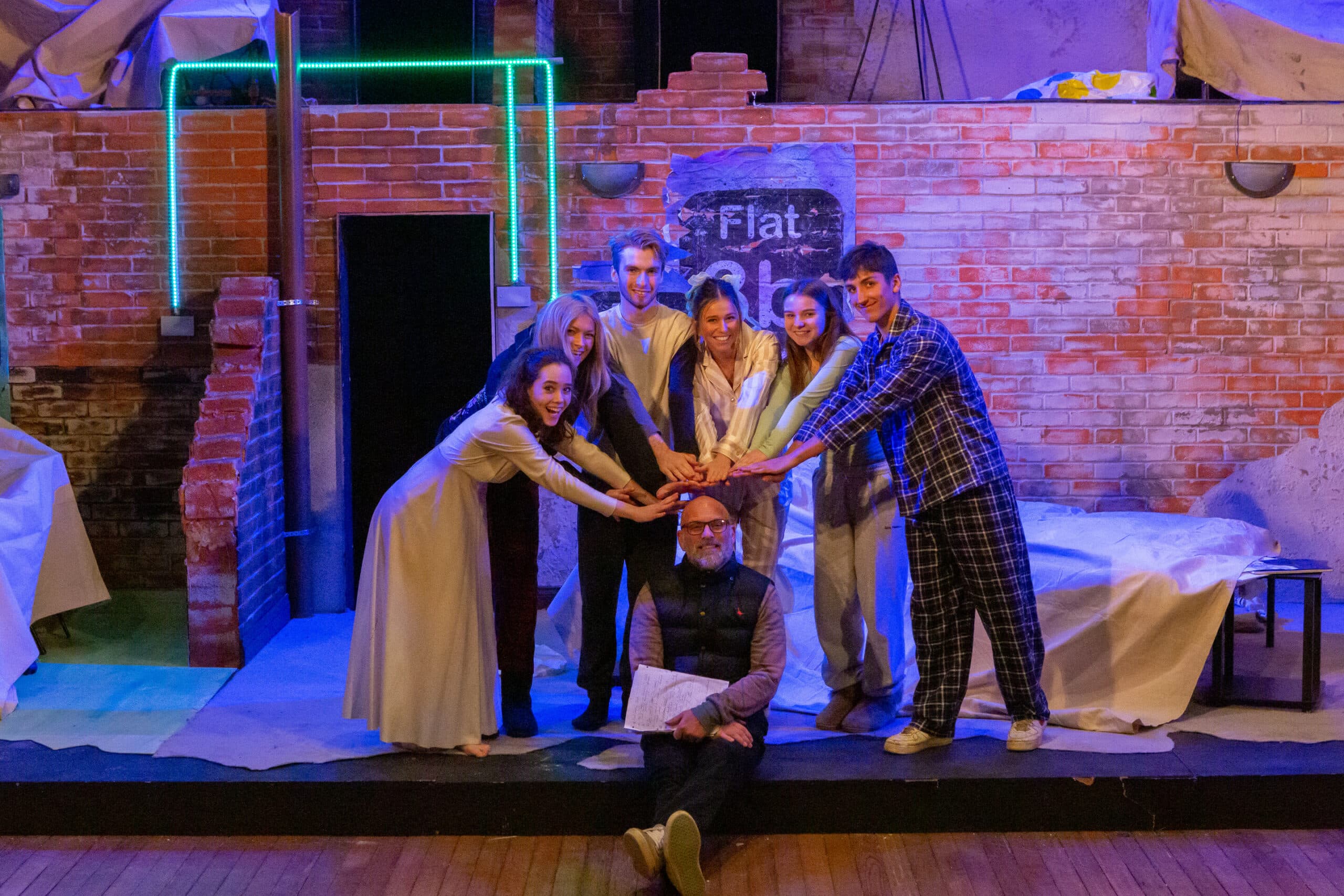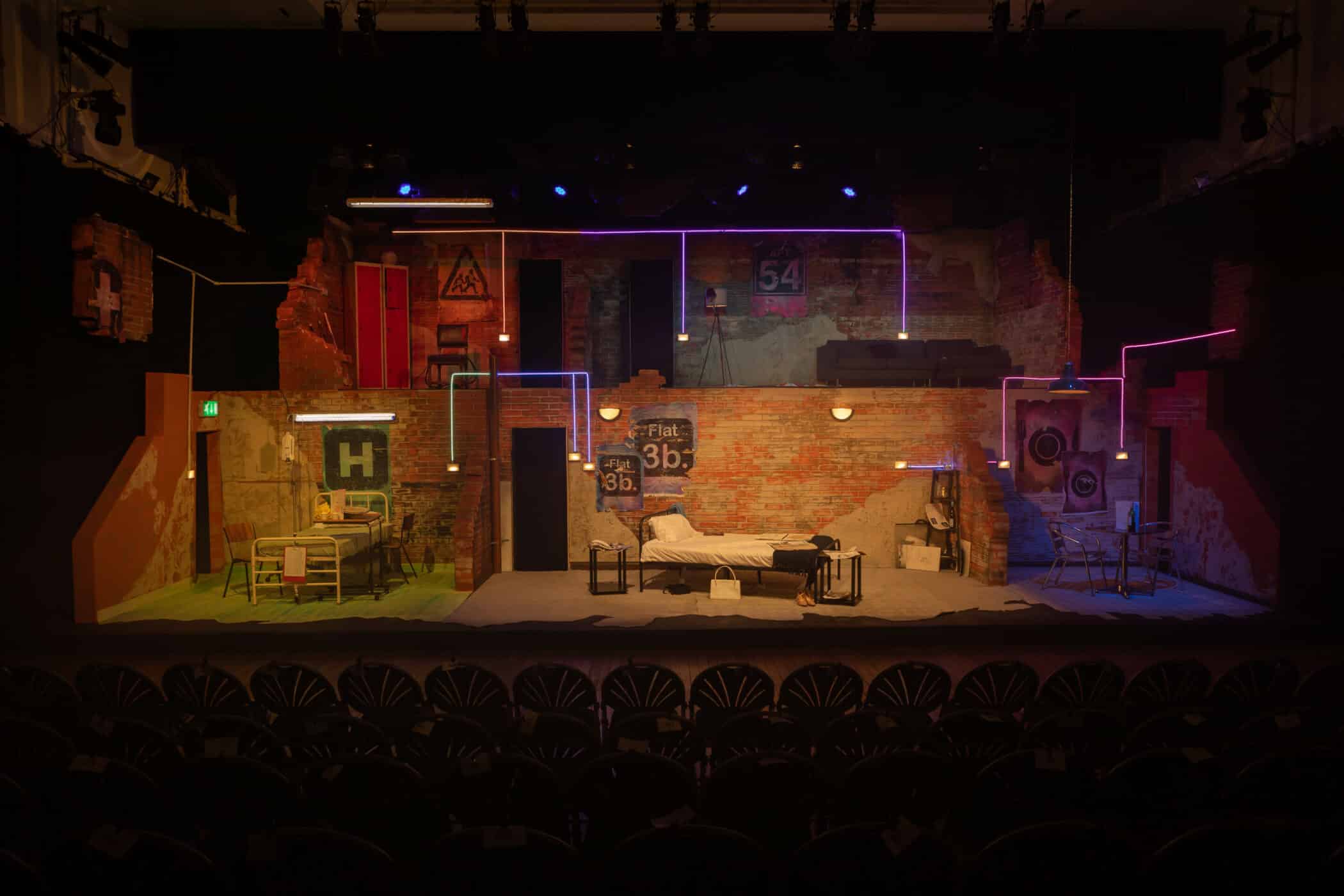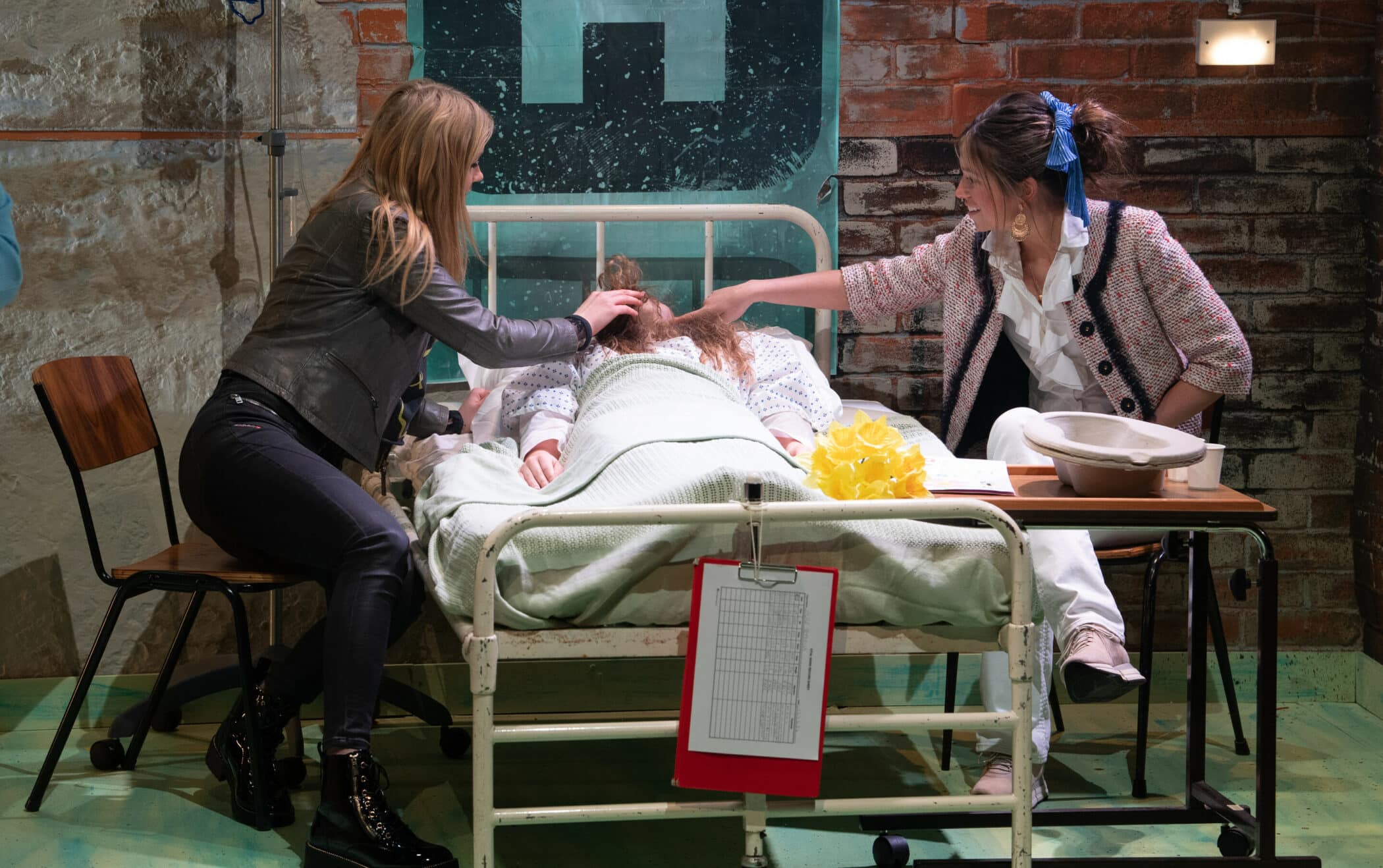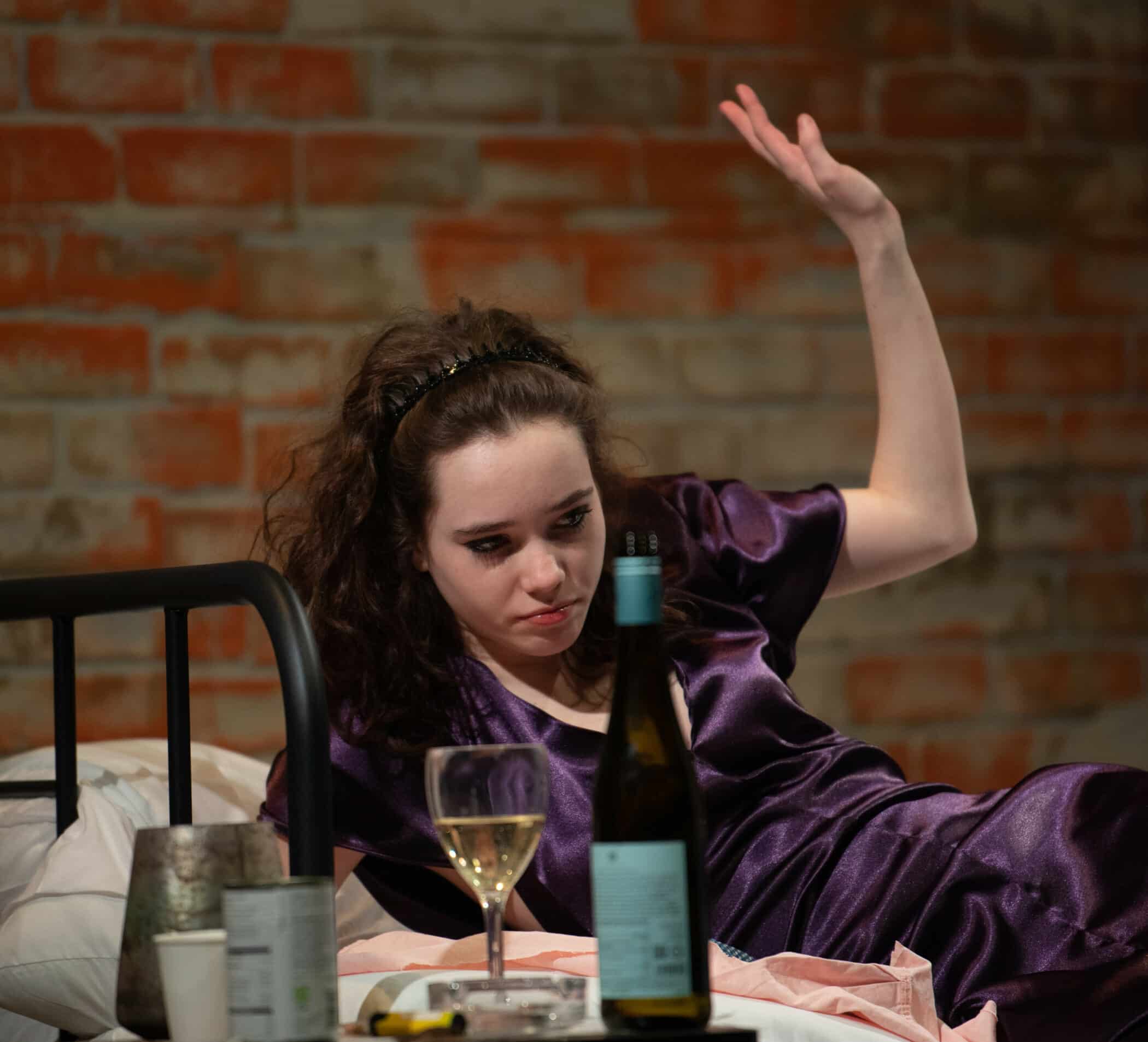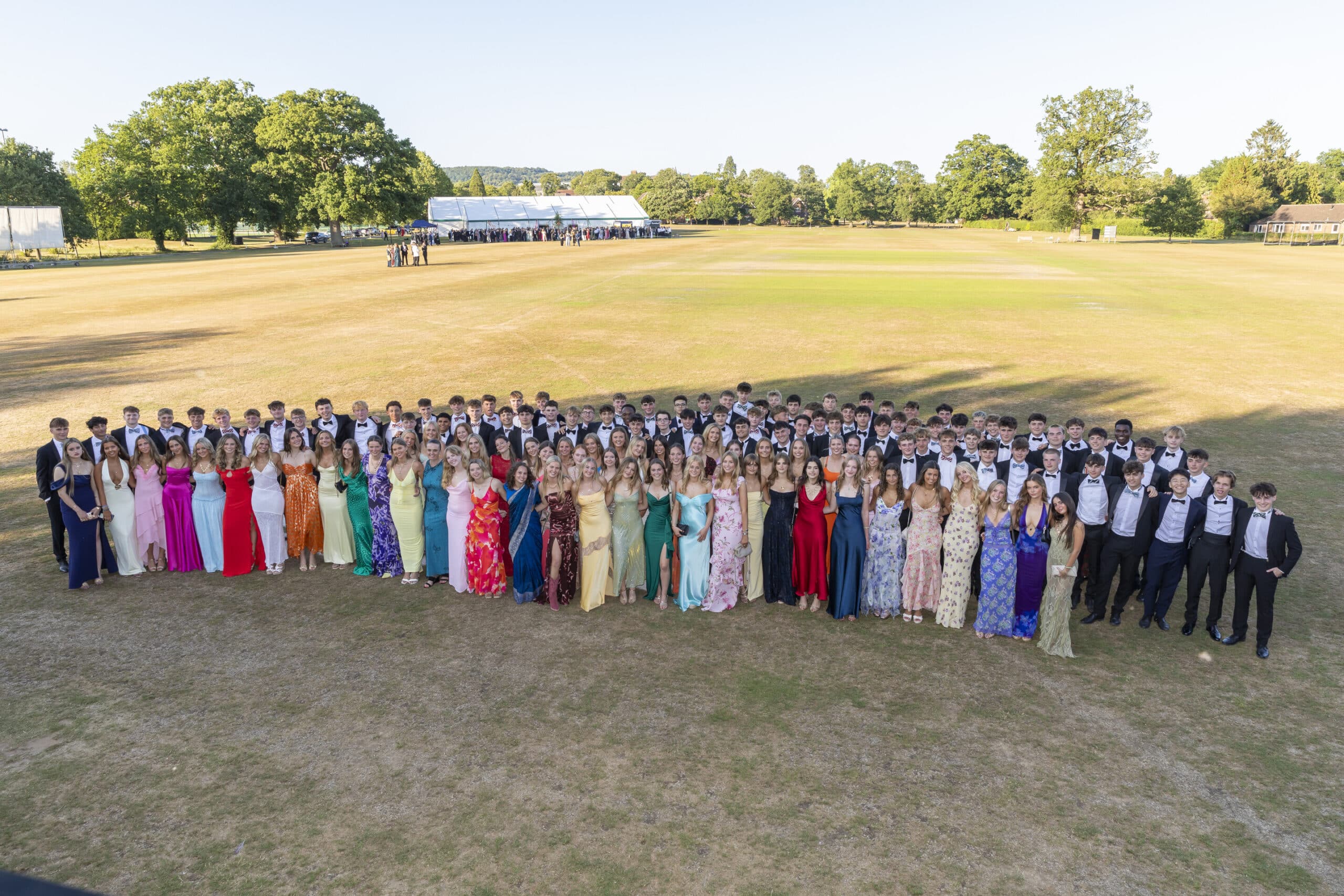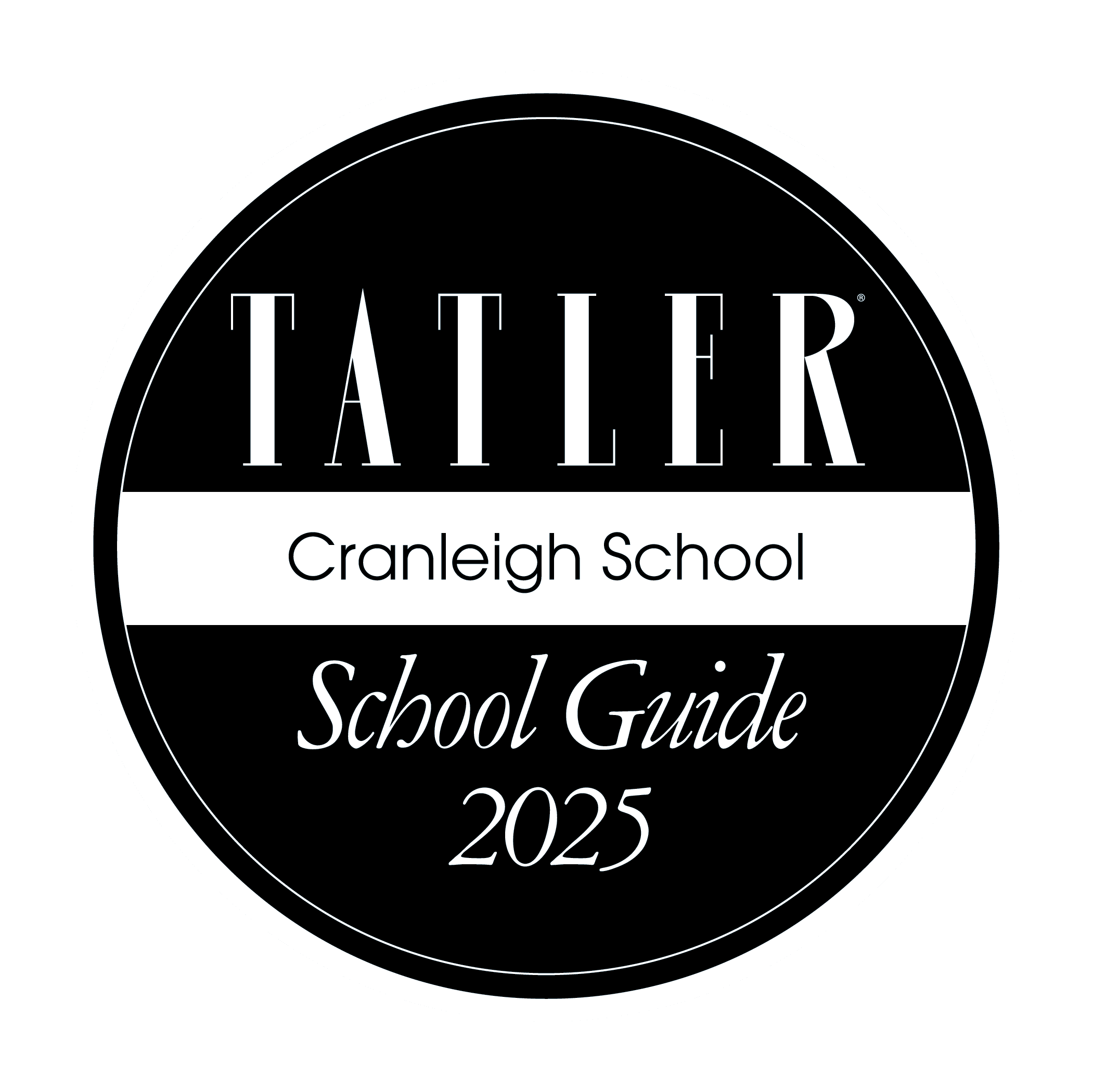The best theatre has a point to make, and sometimes the message is delivered in uncompromising and emotionally brutal ways. Polly Stenham’s 2007 play That Face is one such and it was very carefully rendered by Jon Scott and his cast and production team.
I taught the play for A-Level here at Cranleigh a few years ago, but I have never seen it in performance and this production in Week nine of the Lent term, cast almost exclusively with Lower Sixth students, worked brilliantly.
Why choose a play like this? Surely it would just be easier in relatively conservative educational establishments to keep productions focused on the crowd-pleasing simple stuff, derivative and photogenic plays that demand very little from the audience and offer entertaining diversion for an hour or two, or something a top-tier school’s PR department can froth over for the eye-catching glossy photo opportunities. Jon Scott’s vision for That Face offers some of this stuff, but it also provides a genuine theatrical challenge for the cast, and a confronting one for the audience. That Face is a psychological drama about love and pain that peers into a complex mother-son relationship, and rips the plaster off the deep cut of a family in tatters, one that has never quite communicated effectively, one torn apart by various toxic co-dependencies, neglects or indifferences. It is also utterly heart wrenching.
The play opens in an upstairs school dormitory with a hazing ritual. The ringleader Izzy, played by a suitably bitchy Nicola O., and her morally indifferent sidekick Mia, played superbly by a grungy Emilia H., are initiating a 13-year-old called Alice in the ways of independent sector secondary school hierarchy (feeling comfortable, audience?). Mia takes this abuse of power to the next level by giving the victim (played by Lucy S. in a non-speaking but crucial role) a hefty dose of her mother’s Valium, thus rendering her unconscious. Emilia’s Mia gets sent home, but where exactly is home? We are taken on a trip to her alcoholic mother Martha’s house, to her wealthy but largely absent father Hugh’s docklands apartment, to a restaurant with him and back to dissolute Martha’s for the play’s brutal finale.
While the play unpacks Mia’s motivations, we spend an uncomfortable time in Martha’s bedroom where we peer into the play’s most dysfunctional relationship of all between mother and son. Phoebe McC. captured Martha’s spirit beautifully, and this is not easy to do as Martha is a state: at times child-like in her vulnerability, but an abuser of substances and others’ emotions too. Phoebe communicated Martha’s questionable fixation with her son in gestures that were sensual and delicate, and also jerky and drunken – each was carefully controlled to hold the audience’s attention completely. The play gets much of its dramatic tension from this pairing, and opposite Martha is her teenage son Henry, played by first-timer Jack H. with fantastic sensitivity to the role. He managed to capture the myriad competing influences that Henry faces with complete conviction to the role; Henry has to try to reconcile his own growth as a human with his failing attempts to provide the emotional support and security his mother needs. Well done both of you on this job, because it requires such feats of physical and vocal dexterity and at no point did the emotional charge falter. By the time father Hugh arrives on the scene, it’s too late to throw money at the problem, and his impotent rage was perfectly captured by the bearded Logan B., a vision of affluent yet socially thin-skinned red-chino, brown loafer-wearing desperation.
Throughout the play little sequences of darting LED lights transported us from one part of the two-tier stage to the next and every scene shift worked seamlessly – helped by apposite musical segues from Jeff Buckley’s Halleluiah or Pearl Jam’s Daughter: moving, poignant tracks to capture the play’s abiding spirit which is at times mischievous, at times haunting. As far as the set goes, nothing was superfluous, just clever lighting to move our eye from point to point and cement the notion that this is one world, and a pretty uncomfortable and messed up one at that. Similarly, the split-level set with its shabby, distressed brickwork captured the equally shabby, distressed world these dysfunctional characters inhabit.
So, what else worked well? The nods to Tennessee Williams and Edward Albee are there in the text, and the direction picked these out too, a visual reward for the careful viewer. I also felt that the play’s crowning glory was in the emotional crucible of the final scene, where Jack H.’s Henry was on his knees, gripping Martha’s legs in physical desperation while the line, “I chose you. Choose me back, choose me back” rips out of him in agonising breaths. But to pick this when there were so many high points in the evening is perhaps invidious; so, to all involved, a huge Bravo! and well done for taking on something as exciting as this.
Mr Peter Bradnock, Housemaster, East
